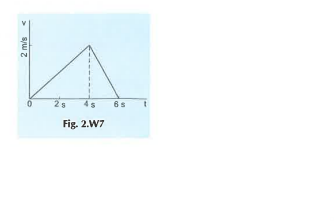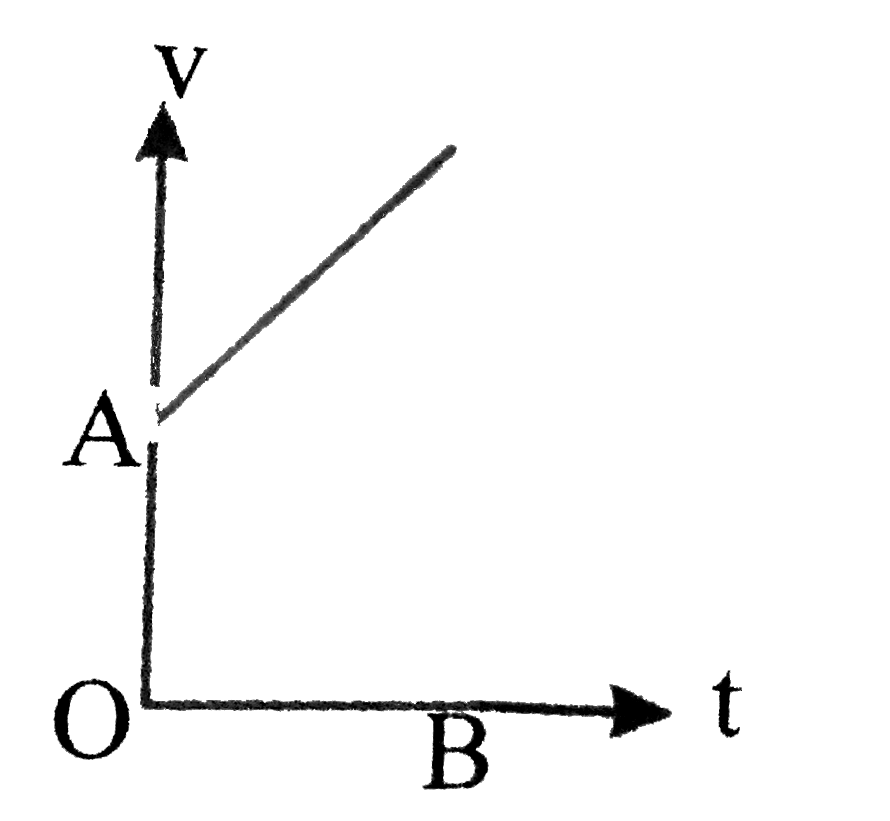(i) Two particles are in projectile motion. The apth of one particle as seen by another particle will be straight line.
(ii) In order to cross a river of uniform width ( flow is also uniform ) in shortest time, swimmer must swim in perpendicular direction of river flow.
The correct Answer is:(i) False (ii) True
False There acceleration may be differenct.
True T=WV to minimize T,V will be maximum .
i.e., whole effort of swimmer must towards opposite bank.
Topper's Solved these Questions
- BOOK - RESONANCECHAPTER - DAILY PRACTICE PROBLEMSEXERCISE - dpp 255videos
DAILY PRACTICE PROBLEMS
- BOOK - RESONANCECHAPTER - DAILY PRACTICE PROBLEMSEXERCISE - dpp 268videos
DAILY PRACTICE PROBLEMS
- BOOK - RESONANCECHAPTER - DAILY PRACTICE PROBLEMSEXERCISE - dpp 246videos
DAILY PRACTICE PROBLEMS
- BOOK - RESONANCECHAPTER - CURRENT ELECTRICITYEXERCISE - Exercise54videos
CURRENT ELECTRICITY
- BOOK - RESONANCECHAPTER - ELASTICITY AND VISCOCITYEXERCISE - Advanced Level Problems9videos
ELASTICITY AND VISCOCITY
Similar Questions
The velocity-time graph of a particle moving along a straight line is shown in Figure 2.W7.Is the motion uniform?
 View Solution
View SolutionA boat can be rowed at 5 m/s on still water. It is used to cross a 200m wide river from the south bank to the north bank. The river current has uniform velocity of 3 m/s due east.
(a) In which direction must it be steered to cross the river perpendicular to current ?
(b) How long will it take to cross the river in a direction perpendicular to the river flow ?
(c) In which direction must the boat be steered to cross the river in minimum time ? How far will it drift ?View Solution
Knowledge Check
- Question 1 - Select One
Assertion: To cross the river in minimum time swimmer should swimming in perpendicular direction to the water current.
Reason: In this case river flow helps to cross this river.AIf both assertion & Reason are True & the Reason is a corrrect explanation of the Asserion.BIf both Assertion & Reason are True but Reason is not correct explanation of the Assertion.CIf Assertion is Trie but the Reason is False.DIf both Assertion & Reason are false - Question 2 - Select One

Two ports, A and B, on a north-south line ar separated by a river of width D. The river flows east with speed u. A boat crosses the river starting from port A. The speed of the boat relative to the river is v. Assume v=2u
Q. Suppose the boat wants to cross the river from A to the other side in the shortest possible time. Then what should be the direction of the velocity of boat relative to river?A30∘ west of northB30∘ east of northC60∘ west of northDalong north - Question 3 - Select One
STATEMENT-1 : If a charge particle enters into a uniform electric field, then its path must be straight line.
and
STATEMENT -2 : Electrostatic force on a positive charge particle is always in the direction of electric field.AStatement-1 is True, Statement-2 is True, Statement -2 is a correct explanation for Statement-1BStatement-1 is True, Statement-2 is True, Statement-2 is NOT a correct explanation for Statement-1CStatement-1 is True, Statement -2 is FalseDStatement-1 is False, Statement-2 is True.
A river is 12km wide and flows at the rate of 3 kmph. A man, who can swim in still water at the rate of 5 kmph wishes to reach the other bank of the river. In what direction should he start swimmin to cross the river (a) along the shortest route, (b) in the shortest possible time ? Calculate how much time he will take to cross the river in the two cases.
View SolutionMatch the entries of Column I and Column II.
COLUMN - I
(A) For a particle moving in a circle
(B) For a particle moving in a straight line
(C) For a particle undergoing projectile motion with the angle of projection α:0<α<π2
(D) For a particle moving in space
COLUMN - II
(P) The acceleration may be perpendicular to its velocity.
(Q) The acceleration may be in the direction of velocity
(R) The acceleration may be at some angle θ(0<θ<π2) with the velocity.
(S) The acceleration may be opposite to its velocity.View SolutionA river of width 100 m is flowing with a velocity of 1.5 m/s. A man start from one end with rest relative the river. He raws with an acceleration of 2m/s2 relative to the river. If the man want to cross the river in minimum time, by how much distance (in meters) will he be drifted (flown) in the direction of river flow during the crossing.
View Solution
The variation of quantity A with quantity B. plotted in the fig. Describes the motion of a particle in a straight line.
(a) Quantity B may represent time.
(b) Quantity A is velocity if motion is uniform.
(c) Quantity A is displacement if motion is uniform
(d) Quantity A is velocity if motion is uniformly accelerated.View SolutionTwo particles execute SHM of the same time period along the same straight lines. They cross each other at the mean position while going in opposite directions. Their phase difference is
View Solution

